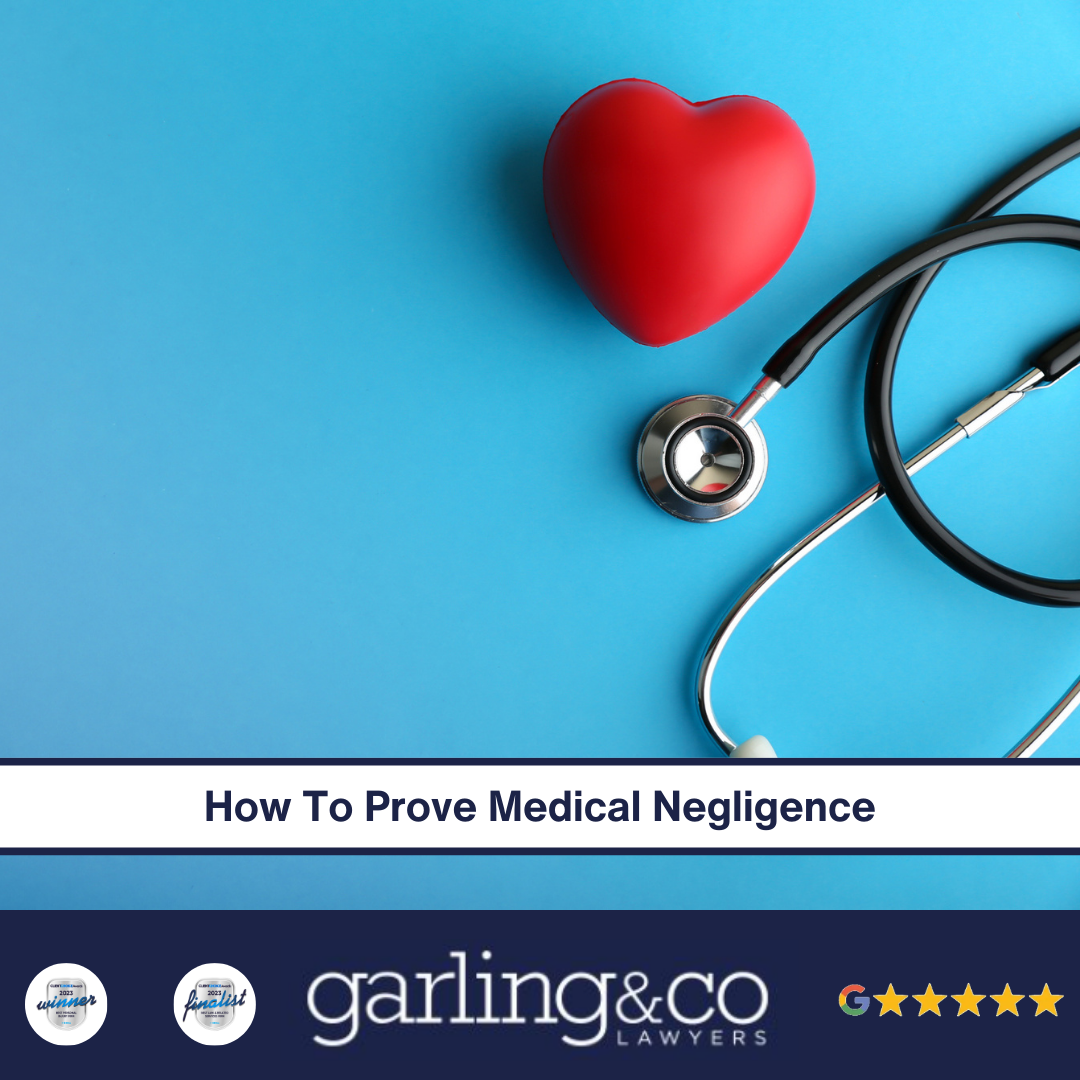
If you think you have a medical negligence claim but are not sure if you satisfy the negligence and causation test you should contact Garling & Co Lawyers for a free case assessment.
What is medical negligence and is there a difference to medical malpractice?
The terms medical negligence and medical malpractice describe the same type of claim. However, the term “medical negligence” is an English/Australian term, whereas the term “medical malpractice” is an American term.
At the end of the day, both terms describe the same thing, that being:
- An act or omission by a medical professional or institution that causes an injury to a patient or someone under their care, and;
- The act or omission departed from the expected medical standard.
Ways to Prove Medical Negligence
- Duty Of Care
To prove medical negligence, you need to establish that the medical professional or Hospital has a duty of care and breached that duty of care.
The first step to proving medical negligence is establishing that there was a duty of care between a medical professional or health care provider and the plaintiff. Duty of care is the medical professional’s responsibility that they will ensure your safety and well-being. The medical professional must exercise reasonable care in the execution of their provision of their services, which includes the initial examination, diagnosis, and treatment of patients.
The next step is determining whether the medical professional breached their duty of care. This can be put into two broad groups – failure to warn or negligent treatment. To prove either, it is normal practice to use an external expert opinion.
- Failure To Warn
Failure to warn is when the plaintiff alleges that the medical professional omitted relevant information about treatments and practices that has caused them harm. Failure to warn includes the omission of any advice, information, or warning about a procedure or a treatment. A medical professional must advise patients of the risk of treatment. The type of information that should be given to the patient include,
- Extent and severity of the potential injury
- Likelihood of injury occurring
- Necessity of the operation
- Alternative treatments
- Fears or concerns of the patient that are known to the practitioner.
The medical professional must provide such advice, information, or warning in a manner that the patient can understand. For example, if a patient did not speak English, or could not understand it, the practitioner would need to be satisfied that they have successfully conveyed the information and risks of the surgery to the patient.
To successfully argue the failure to warn, the plaintiff needs to prove whether the omission of any advice, information or warning caused the patient any harm. For example, if the patient wasn’t advised about an alternative surgery that had more risks and a higher chance of failing, it would be difficult to prove that the inclusion of this information would have resulted in the patient electing to have any different treatment.
An expert medical opinion needs to be obtained in any medical negligence claim to prove breach of duty of care.
- Negligent Treatment
Negligent treatment is one where the medical professional’s actions or omissions cause harm or injury to the patient during treatment. Examples of this include:
- Botched surgery
- Misdiagnosis
- Medication errors
- Failure to refer a patient to a specialist
- Misreporting test results
A medical professional is not negligent if they acted in a manner that was widely accepted at the time of the treatment as competent medical practice. This means that a similar doctor would not have acted differently provided with the same information, and therefore the medical professional’s actions or omissions cannot be negligent. To prove this, an expert opinion should be consulted. The expert will testify on whether the medical professional acted within competent professional practice given the circumstances of the case.
To have breached the duty of care in a medical negligence case, the medical professional must have acted outside of peer professional opinion, and such an action or omission led to directly to harm or injury to the patient.
- Causation
While it is necessary to prove a breach of duty of care, it is also necessary to prove that such a breach was the cause of harm or injury to the patient. In medical negligence cases the plaintiff bears the onus of proof and needs to prove causation.
Causation is the requirement that negligence is a necessary condition for the harm occurring. It is the notion that if there was no negligence, the harm would have been avoided. If the medical professional’s negligence materially contributes to the injury, then there is causation. If there are multiple factors contributing to a patient’s harm, as long as one of the factors is caused by the medical professional’s negligence, factual causation is met.
- Damages
Depending on the extent and severity of injuries, a successful plaintiff may be able to claim compensation for:
- Past and future medical expenses
- Past loss of income
- Future loss of income and/or loss of earning capacity
- Past care
- Future care
- Pain and suffering
- Loss of enjoyment of life.
How hard is it to prove medical negligence?
It is very difficult to prove Medical Negligence. In Medical Negligence cases, there is a high standard of proof, involving complicated medical documents and reports and expert opinions. That is why it is important to consult an accredited specialist to assist you in your medical negligence claim.
What happens once I can prove medical negligence?
To prove medical negligence you need to establish that the medical professional or hospital breached their duty of care. This will always involve obtaining expert medical opinion related to the failure or omission of the medical practitioner or hospital which caused your injury.
If you do have an arguable claim for medical negligence, you are entitled to claim damages, which is a form of compensation. Damages a payable in respect of;
- Payment for pain and suffering loss of enjoyment of life
- Payment of past and future medical treatment
- Payment in past and future loss of income and for
- Payment of care past and future care and assistance.
Damages are payable as a once off lump sum amount to compensate you for both past and future losses and it is a once-off payment of compensation. You are not entitled to return and claim any further compensation once the amount has been agreed or determined by a court. The majority of claims for medical negligence need to be commenced in the District or Supreme Court of NSW and it takes between one and two years from the commencement of the claim for it to be settled either by way of negotiation with the insurance company or a determination by a judge.
If you think you have a claim for medical negligence you need an Accredited Specialist in Personal Injury Law to act on your behalf.












